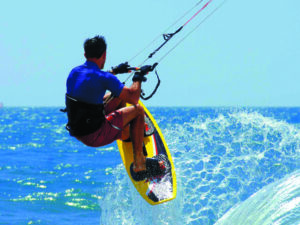 The Columbia River runs silently without fanfare past our backyard. I have driven along it hundreds of times and never seriously considered its history. Much like having my 88 year old grandmother living with us until her death when I was 15, I never gave a thought about asking her about her family, childhood, or her life story. Fortunately our river’s story is not lost to those who seek it. An entire collection of books have been written, but here is a brief synopsis of a river so vital to us all.
The Columbia River runs silently without fanfare past our backyard. I have driven along it hundreds of times and never seriously considered its history. Much like having my 88 year old grandmother living with us until her death when I was 15, I never gave a thought about asking her about her family, childhood, or her life story. Fortunately our river’s story is not lost to those who seek it. An entire collection of books have been written, but here is a brief synopsis of a river so vital to us all.
Let’s start where she starts near Columbia Lake in British Columbia, Canada. She then flows 1,243 miles to the Pacific Ocean. Geologists surmise that the ice dam in present day Montana called Lake Missoula breached multiple times beginning about 15,000 years ago and swept a violent wall of water down the Gorge and covered the land where Portland now stands with a depth of 400 feet of water changing the landscape in the process.
Native American tribes have lived along its bank and vicinity for centuries. When Lewis and Clark passed by Celilo Falls in 1805, the tribes were gathered for trading, bartering, socializing and selling their unique products. The Expedition referred to it as the “Great Mart of all this Country.” Peoples from the north brought elaborately decorated coiled baskets, skins, and berries. From the south came obsidian and bows. From the east came horses, camas, and buffalo hides. People from the west brought wapato, whale oil, and shells.
The Columbia has been a liquid-highway for many people. From canoes and rafts to 1836 when the first paddle-wheel steamboat, the Beaver came to Portland commencing a new era of transportation and commerce up and down the river. Railroads and dams with their locks brought an end to paddle boats and brought in the modern era of the barge and tug businesses. The last steamer, the “George Burton” left from Portland to The Dalles in 1947. It is estimated that some 50 million tons of cargo make its way up and down the river from Lewiston, Idaho.
Of course there are the dams that have tamed the Columbia. Celilo Falls, a special salmon fishing and gathering place is now under water. Progress comes with a price. In 1943 President Roosevelt authorized the Columbia Basin Project that would include the Grand Coulee Dam in central Washington. In addition to cheap electrical power the dam was to provide irrigation water to the semi-arid basin. However World War II changed plans. Power was needed to support wartime shipyards and the production of aluminum smelters for the Boeing B-17 and B-29 aircraft. In 1948 President Truman remarked that “Without Grand Coulee and Bonneville dams it would have been almost impossible to win this war.”
By 1952 the first irrigation water was pumped to the fertile Columbia River Basin. All the thirsty land needed was hearty farmers and water to raise crops to help feed the nation. Acres upon acres of potatoes, hops, mint and orchards now dot the landscape. The prophetic vision of the “desert shall rejoice and bloom as a rose” has be fulfilled.
And finally there is recreation. From Portland’s sailboats and yachts to Hood River’s colorful sail boards and windsurfing we use the river as our playground. In the Tri-Cities in Washington is the annual Hydroplane races. On July 23-25, 2021 the Columbia Cup will be held. It is sight and sound to behold. These “boats” travel at nearly 200 mph and shoot rooster-tails high into the air. This event can be found at waterfollies.com. Not to be left out are the thousands of fishermen and hunters in and along the Columbia River.
For all of its events and activities, most of us -Oregonians and visitors alike- appreciate the Mighty Columbia for its natural beauty. Nothing beats a clear day with the Columbia River and Mt. Hood framed together in this great place some of us are fortunate enough to call home.
No Comments
Leave a comment Cancel